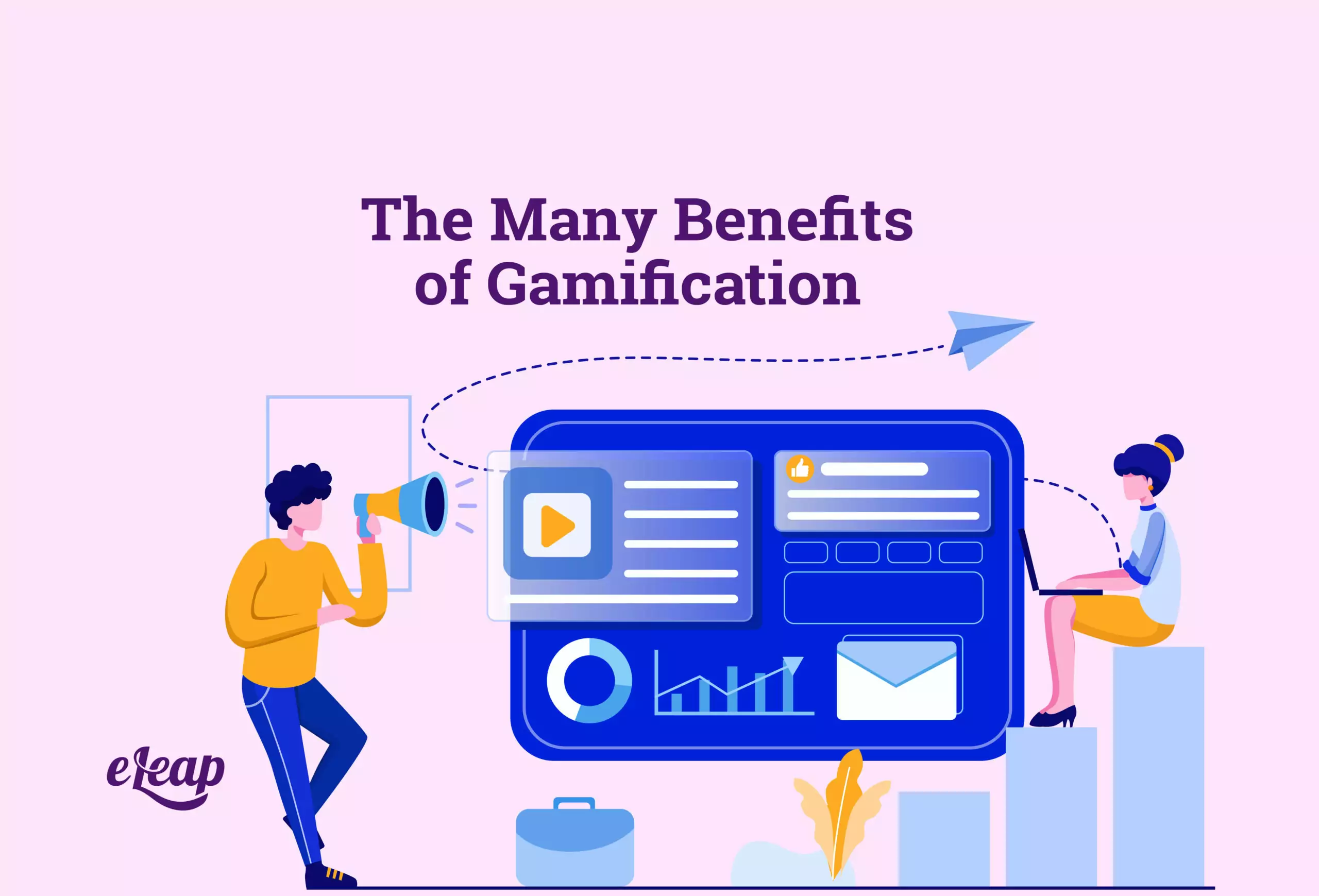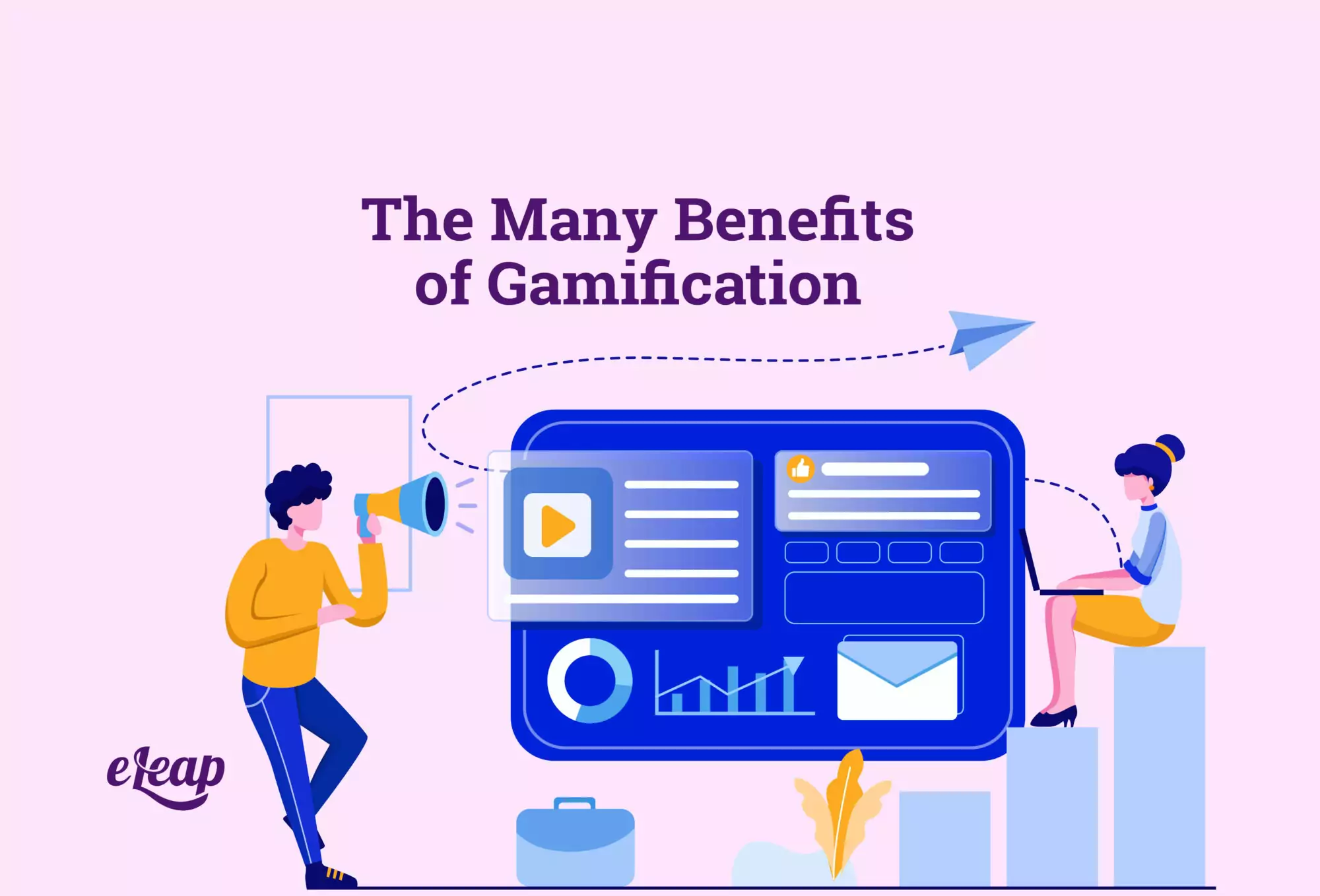The Many Benefits of Gamification

Gamification is an aspect of learning management systems that more and more organizations are choosing to rely heavily upon for improved learning amongst their employees. It works wonders when it comes to enhancing engagement, retention, productivity, and can even contribute to overall improved job satisfaction rates. The use of games to help people learn is particularly beneficial in environments where undergoing a large amount of mandatory (and sometimes dull) training is required. For example, organizations that require a lot of rather boring or repetitive compliance training benefit significantly from games.
Previously, we have discussed the vital elements of gamification within an LMS, and how each of those elements can help learners. But what are the overall benefits of including gamification in your learning management system? Well, gamification’s primary purpose is to engage learners, but how exactly does it do this? And what other advantages does adding gamification to your LMS bring?

Gamification vs Game-Based Learning
In order to understand it’s many benefits, you should first understand the difference between game-based learning and gamification. In game-based learning, game elements and technology are applied to non-game situations. Gamification, by contrast, combines game elements with learning. Learning is therefore accomplished through gameplay, rather than the learning itself being enhanced by game elements. Gamification is also a method trainers use to keep employees engaged in corporate training by increasing employee motivation.
Game design elements are used for gamification within LMS platforms to improve learner experience and success. Different platforms utilize different elements, but leaderboards, badges, graphs, and certificates are common to most LMS tools.
Using gamification to enhance work processes at contemporary workplaces has been the subject of numerous studies. It’s been reported that 78% of employees are motivated by game-based activities, and gamified systems also improve work experiences for 91% of workers. Ultimately, gamification can hugely improve engagement, retention, skills, and overall productivity. Let’s dive further into the ways in which they achieve this.
Games Make Learning More Fun
It’s no secret that the ultimate goal of games is to make things more fun. They’re engaging and make often dull topics far less boring. What’s more, they encourage a healthy competitive environment, and competition is in our nature. Moreover, games help learners gain a better understanding of what they are capable of, especially when positive results are achieved.
The power of showing a learner exactly what they are capable of achieving is next to none. Gamification metrics provide learners with instantaneous and important information about their performance. This allows learners to determine the best way to improve their own performance if they aren’t satisfied with their results. But the critical thing to note, is that it does all this in a fun way that doesn’t discourage or bore the learner.
They Help to Foster a Cooperative Environment
Games make learners feel like they’re part of a group that’s working together. This is important, as being a member of a group instills a sense of obligation among human beings. The desire to do their part and pull their own weight so as not to let the team down motivates learners to use the learning platform in a productive and effective manner.
Gamification also enhances cooperation by providing statistics about the learners directly through the learning management system. This enables learners to see where they sit, as well as strive to do better. Goals can also be set both competitively and non-competitively. Using statistics, healthy competitions can be formed between different groups, which contributes even more to the enhancement of a cooperative environment.
Games Enhance Ambition
Rewards are critically important. Why? Because when a reward is received, learners feel recognized, encouraged, and motivated to keep trying. When a learner doesn’t receive a reward for their efforts, they feel that they are wasting their time and their efforts are unrecognizable or don’t matter. Motivated individuals seek intrinsic rewards, but many learners also have the desire to receive a reward that’s external. For learners who aren’t intrinsically motivated, games can work wonders in encouraging them to achieve results. Once they receive a reward, they will be highly likely to work hard to reap the benefits of seeking that reward again. Without a good rewards system, only learners who are intrinsically motivated are likely to reap the best benefits of an LMS.
They Encourage Healthy Competition
It is in our nature to compete, and games motivate us to do this in a healthy manner. Whenever learners have the opportunity to compete and succeed, they are more motivated to achieve more. Using leaderboards and points systems, games easily show learners their rank amongst others. This encourages them to play on our naturally competitive nature in order to overtake others and do better. The competitive environment can be particularly beneficial for workplace learners in particular departments. For example, sales teams by nature tend to be more competitive than other departments, so the competition aspect of games can reap huge benefits with such team members.
They Help to Improve Status
Not achieving the status you know you’re capable of can be quite disheartening. For this reason, success takes precedence over failure and the prospect of moving up is very encouraging and motivating. As human beings, we are all constantly seeking recognition, so status is important to us. The relationship between status and competition is inseparable. Our performance is measured by comparing how we’re doing when engaging in a certain activity with other participants. Games encourage learners to move up in the world and do better.
There are a number of different game design elements that organizations have implemented into their learning management systems to help encourage and engage their learners. The learning experience is made more enjoyable when gamified LMS platforms are used, particularly for organizations that require their employees to learn a lot of mandatory material.
Overall, the learning process becomes more engaging, students become more motivated, they participate more, and they retain more information when gamification is strategically implemented.